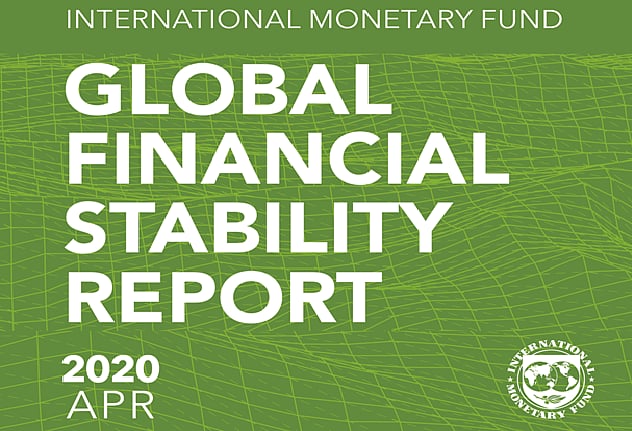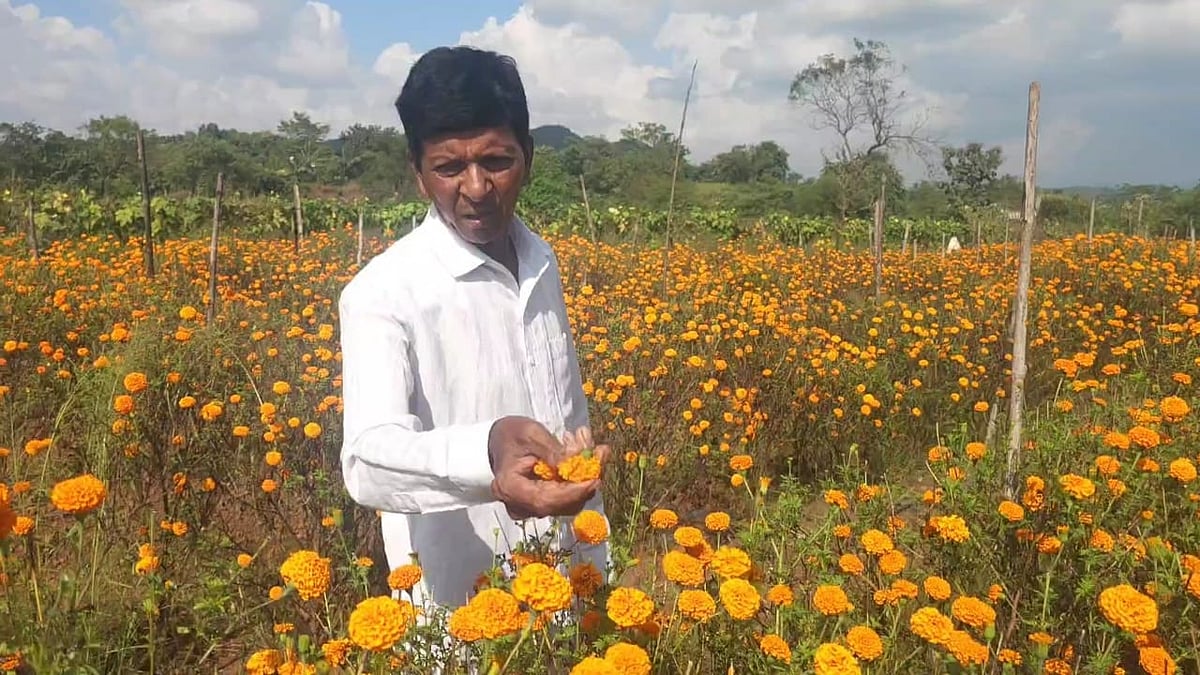That the COVID-19 pandemic poses unprecedented health, economic, and financial stability challenges is well known by now. The first priority is, of course, to save lives. But the necessary containment measures to limit the spread of the virus are causing a dramatic decline in economic activity.
The International Monetary Fund (IMF) released the April edition of its Global Financial Stability Report this week. This crisis presents a very serious threat to the stability of the global financial system. “Following the COVID-19 outbreak, financial conditions tightened at unprecedented speed, exposing some “cracks” in global financial markets. Market volatility spiked and borrowing costs surged on expectations of widespread defaults. Historically large capital outflows exacerbated domestic shocks in emerging market economies. These developments have raised the risk that the inability of borrowers to service their debts would put pressure on banks and cause credit markets to freeze up.”
“To safeguard economic and financial stability, central banks have eased monetary policy and are providing liquidity to the financial system, to maintain the flow of credit to the economy. Country authorities are supporting people and companies through sizable, timely, temporary, and targeted fiscal measures to put a limit on defaults of firms and households via payment moratoriums and guaranteed credit.”
“Multilateral cooperation has increased the resources available to support the most vulnerable countries and communities. The IMF, with $1 trillion in available resources, is actively supporting its member countries. These policies are essential to ensure that a temporary shutdown of production does not lead to more permanent damage to the productive capacity of the economy, to the financial system, and to the fabric of society. Once the virus outbreak is under control, policies should be aimed at fostering the recovery, as well as assessing and healing the damage inflicted by the pandemic on the balance sheets of non-financial firms, financial institutions, and governments.”
So high prices, low purchasing power, less demand, high unemployment, excess food grains production, lower income for farmers, and we are staring at some pretty grim times ahead.

In only three months, the 2020 outlook has shifted from expected growth of more than 3 per cent globally to a sharp contraction of negative 3 per cent—much worse than the output loss seen during the 2008–09 global financial crisis. India is still being touted to grow at 1.5 per cent plus, but is that enough for this vast country?
India which managed to survive the 2008-09 crisis primarily because of its internal consumption, will find it much tougher this time. This time, the consumption itself will be at stake. Consider the following scenario. Even after things go back to normal, if and when they do, salaried people will realise less money. No bonus, no major hikes, no indirect compensation are on the cards. Every one is losing money, so how can they afford to pay increased remuneration. All company sponsored junkets, expense accounts will also see a drastic reduction, if not total elimination.
Add to these 40 days lockdown during which most families would have learnt the substantial benefits of being at home, cooking at home, and no shopping trips. The money that a majority of population has saved during this month is bound to tempt them to continue with this austerity.
Now let’s consider the companies which make goods and consumables. They will take a long time to achieve 100% capacity utilisation. Their cash flow economy will have taken a severe beating and in order to continue paying salaries for the no-production weeks, chances are high that many of them will resort to hiking the prices. At the same time, the government too will need to increase its revenues. Indirect taxation in terms of excise duties on non-essential items might also see a substantial hike. Further, in order to boost consumption, the government will try to infuse further liquidity into the system, and the central bank might cut interest rates even further.
The government appears to have realized the enormity of the economic crisis that threatens to engulf the country in the next few months. Slowly but surely, lockdown is being relaxed.

The RBI governor has already cut reverse repo rate by 25 basis points to 3.75%, while keeping repo rate unchanged, in emergency measures to provide more relief to an economy fighting the fallout of coronavirus. The Reserve Bank has brought down the LCR (Liquidity Coverage Ratio) requirement of banks to 80% from 100%, giving more liquidity to banks.
The governor also announced Rs 50,000 crore special finance facility to be provided to NABARD (Rs 25,000 crore), SIDBI (Rs 15,000 crore), and NHB (Rs 10,000 crore). The surplus capital will hopefully help refinance commercial and housing finance banks to infuse liquidity into the market. Earlier, last month, the RBI cut the repo rate by a massive 75 basis points, while Finance Minister Nirmala Sitharaman had announced a mega economic relief package worth about Rs 1.7 lakh crore.
As liquidity increases in the system, inflation will also start going up. So high prices, low purchasing power, less demand, high unemployment, excess food grains production, lower income for farmers, and we are staring at some pretty grim times ahead.
The government appears to have realized the enormity of the economic crisis that threatens to engulf the country in the next few months. Slowly but surely, lockdown is being relaxed.
Transportation of goods will be permitted without any distinction of essential or non essential commodities. However, employers will have to abide by stringent safety instructions suggested by the Ministry of Home Affairs (MHA).
As is evident, none of us can afford total lockdown any longer. The pandemic sloth needs to be woken up, albeit slowly. As the government has decided, post 20 April, the non-critical zones will see many relaxations. Transportation of goods will be permitted without any distinction of essential or non essential commodities. However, employers will have to abide by stringent safety instructions suggested by the Ministry of Home Affairs (MHA).
For a quick reference, it may be prudent to display the Ministry’s relaxed norms. The notification lists out activities that will be allowed after 20 April and those which are prohibited.
"The permitted activities from April 20, 2020 are aimed at ensuring that agricultural and related activities remain fully functional; the rural economy functions with maximum efficiency; employment opportunities are created for daily wage earners and other members of the labour force; select industrial activities are allowed to resume their operations, with adequate safeguards and mandatory standard operating protocols (SOPs); and the digital economy," a notification put out by home ministry reads.
Here's a list of activities which will be allowed after April 20, 2020:
Construction of roads and for building projects in rural areas to be permitted.
All agricultural & horticultural activities to remain fully functional, such as - farming operations by farmers & farm workers in field, including procurement of agricultural products, agriculture marketing through notified Mandis and direct and decentralized marketing, manufacture, distribution and retail of fertilizers, pesticides and seeds; activities of marine and inland fisheries; animal husbandry activities, including the supply chain of milk, milk products, poultry and live-stock farming; and tea, coffee and rubber plantations are allowed to be functional.
To provide an impetus to the rural economy, industries operating in rural areas, including food processing industries; construction of roads, irrigation projects, buildings and industrial projects in rural areas; works under MNREGA, with priority to irrigation and water conservation works; and operation of rural Common Service Centres (CSCs) have all been allowed. These activities will create job opportunities for rural labor, including the migrant labor force.
Manufacturing and other industrial establishments with access control have been permitted in SEZs, EoUs, industrial estates and industrial townships after implementation of SOP for social distancing. Manufacture of IT hardware and of essential goods and packaging are also allowed. In offices, the guidelines stipulate that all seats should be 6 feet apart seats and there should be at least one hour gap between shifts
Coal, mineral and oil production are permitted activities. It is expected that the industrial and manufacturing sectors will see a revival with these measures, and will create job opportunities while maintaining safety protocols and social distancing. At the same time, the important components of the financial sector, e.g., RBI, banks, ATMs, capital and debt markets as notified by SEBI and insurance companies will also remain functional, with a view to provide enough liquidity and credit support to the industrial sectors.
Digital economy is critical to the services sector and is important for national growth. Accordingly, e-commerce operations, operations of IT and IT enabled services, data and call centres for Government activities, and online teaching and distance learning are all permitted activities now.
The revised guidelines also permit all health services and the social sector to remain functional; public utilities to function without any hindrance; the supply chain of essential goods to operate without any hindrance; and, important offices of Central and State Governments and local bodies to remain open with required strength.
MNREGA works are allowed with strict implementation of social distancing & face mask.
The time is ripe to sniff out opportunities now. While ports and flights will take time to start functioning normally, the crisis might also present some lucrative export opportunities. Start brainstorming and planning sooner than later.
Please note: The article has been contributed by Shekhar Ghosh.(shekharghosh@fpj.co.in)











